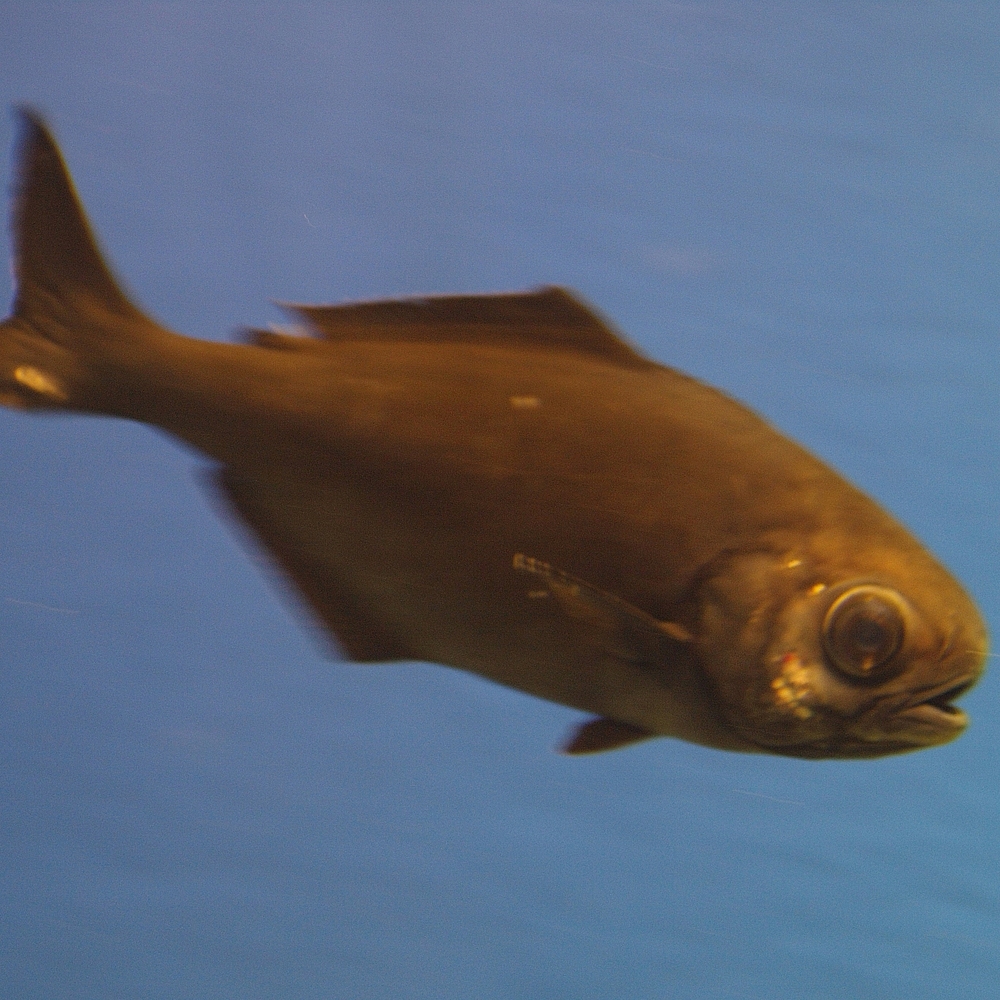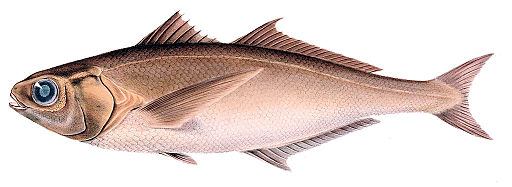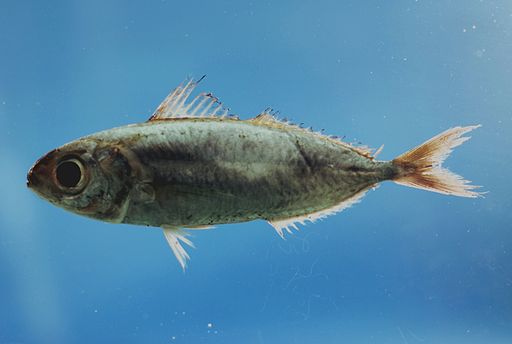Stromateoidei
Some bony features, but nothing super exciting. Nelson says they have some toothed outgrowths in the gullet, so be careful before you go sticking your fingers down their throat.
Amarsipidae: Amarsipas
There is one species, Amarsipus carlsbergi, and it's quite the enigma. It barely has a common name, and has a translucent body. Maybe it's trying to hide from something? Who knows?

http://opencage.info/pics/large_10498.asp
Centrolophidae: Medusafishes
These nondescript fishes have an ovalish body with long dorsal and anal fins. I think (not 100% sure) they get their name because some species hang out around jellyfish for protection.

Illustrations of the Zoology of South Africa [Public domain], via Wikimedia Commons
Nomeidae: Driftfishes
These fishes look like fishes. I personally think the picture in Nelson has a dorsal fin that looks like a Lay's wavy chip. But that's just me. The Man-of-War Fish, Nomeus gronovii, is found swimming unharmed within the tentacles of the Portuguese Man-of-War. Supposedly it also eats the tentacles, and the gonads. That's some weird stuff.

By SEFSC Pascagoula Laboratory; Collection of Brandi Noble, NOAA/NMFS/SEFS. [CC BY 2.0 or Public domain], via Wikimedia Commons
Ariommatidae: Ariommatids
There is one genus, Ariomma. There's not too many exciting details, though Nelson describes them as having a "caudal peduncle with two low, fleshy, lateral keels." Fascinating!
Tetragonuridae: Squaretails
There is one genus, Tetragonurus, with three species. The tails aren't really square, but they are much more square than most other fish tails, so we'll let this one slide. Nelson says they "feed almost exclusively on coelenterates and ctenophores" AKA jellyfish and comb jellies. What a picky eater!

By SEFSC Pascagoula Laboratory; Collection of Brandi Noble, NOAA/NMFS/SEFSC. (NOAA Photo Library: fish4386) [CC BY 2.0 or Public domain], via Wikimedia Commons
Stromateidae: Butterfishes
These fishes have an oval to rounded body shape and are lacking pelvic fins. Some species are considered to be food fishes...I bet they cook them in butter.